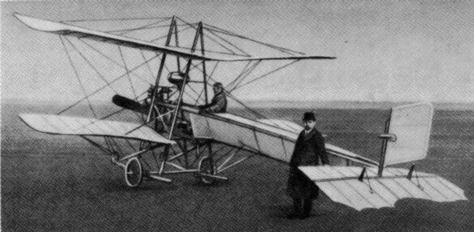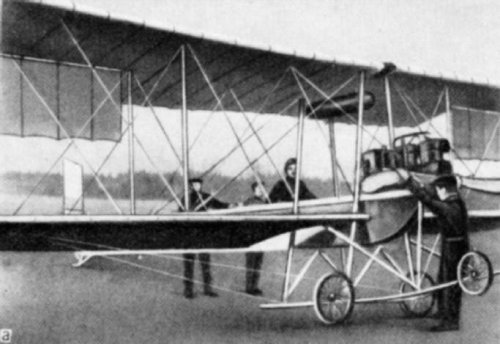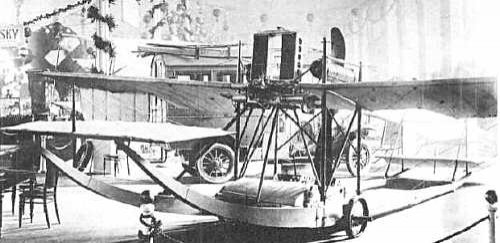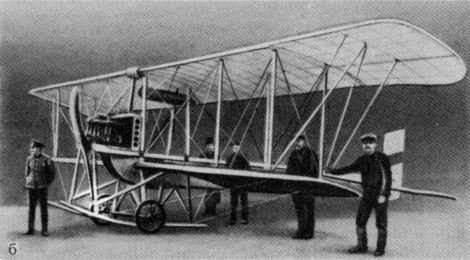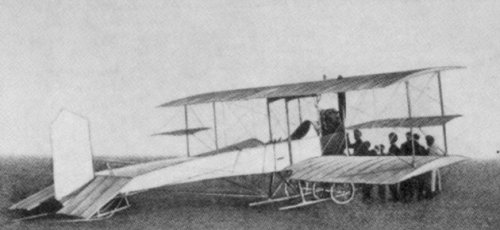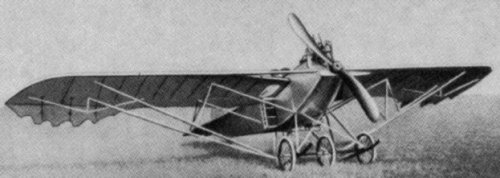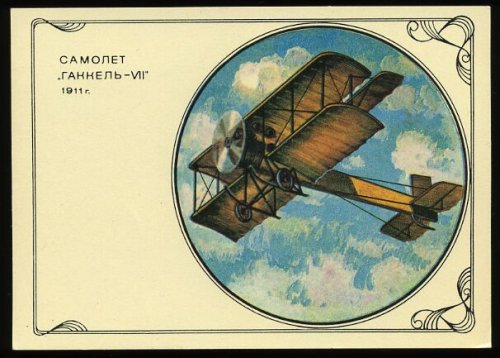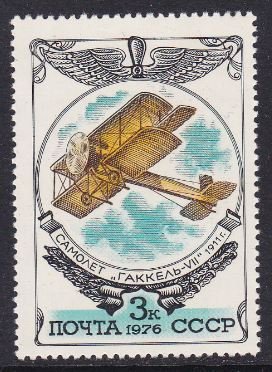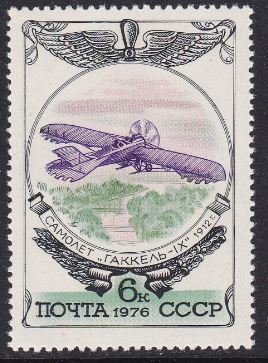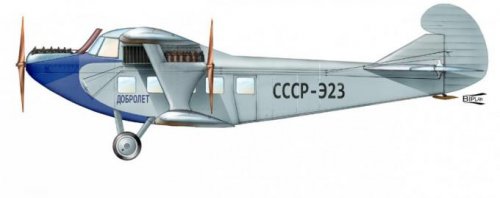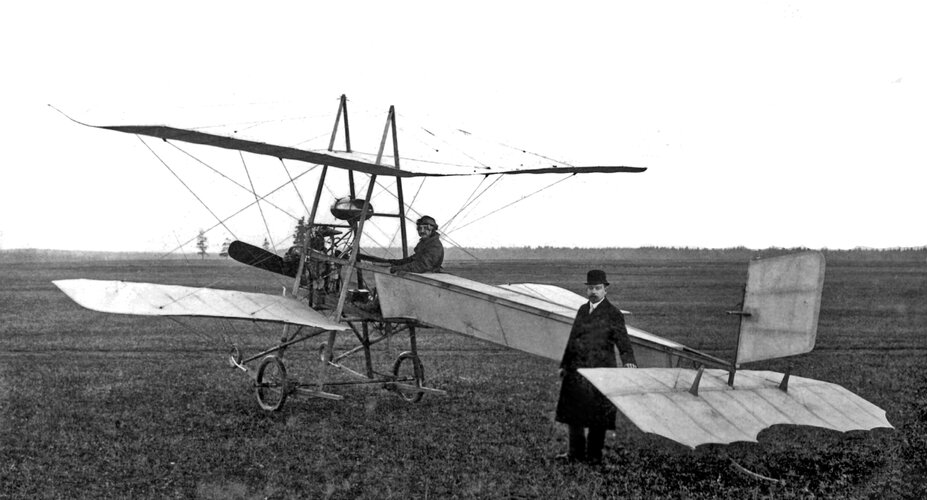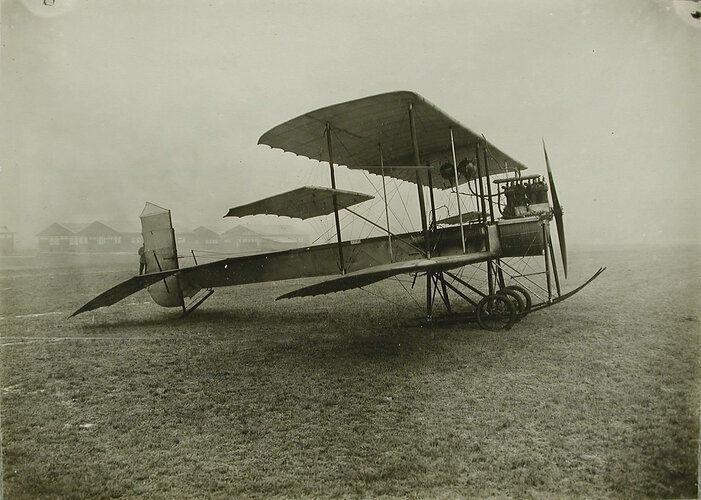- Joined
- 28 January 2008
- Messages
- 628
- Reaction score
- 448
Yakov Modestovich Gakkel (1874-1945), Engineer Designer
Born Irkutsk May 1874, Y.M. Gakkel was a teacher of the St. Petersburg Polytechnic University. He was one of the founders of the St. Petersburg's tram system and builder of the first Russian power lines across the Lena gold fields.
Like many talented engineers, Gakkel was attracted to the then fashionable hobby of flight. In 1909 the first Russian aeronautical company, named Pervoye Rossiiskoye Tovarishchestvo Vozdukhoplavaniya S.S. Shchetinin after its principal founder, was established in St. Petersburg. A collaborator in the enterprise was Gakkel and about 1912-1913 the company was joined by the later renowned D. P. Grigorovich. First built Farman and Bleriot type aircraft, but after Grigorovich joined began to specialize in marine aircraft.
In the spring of 1910 he built in a New Village workshop, next to the airfield near St. Petersburg, he began work on some early aeroplane designs. On June 19, 1910 saw the first flight of the Gakkel-III, a machine which was the first completely designed and built in Russia.
Gakkel graduated from the Electrotechnical Institute in 1897, and in 1906-31 served on faculty of the Institute, becoming a professor in 1921. Gakkel was a designer and an honoured worker of science and technology of the Russian Soviet Federative Socialist Republic (1940). He also worked at Leningrad Regional Institute of Thermal Technology and at Leningrad Institute of Engineers of Railroad Transportation.
He was one of the creators of the first Russian Aeronautic Partnership. He developed a number of models of Russian airplanes, including the first in Russia amphibian hydroplane in 1911. He was in charge of the diesel bureau of the Institute of Thermal Technology, and created the first in the USSR diesel locomotive engine in 1922. Gakkel designed the first steam tractor in 1934; the same steam engine was later used in river cutters.
He was always associated with the former Russian capital of St Petersburg (Petrograd/Leningrad). In the 1930s, he lived at 34 Fontanka River Embankment. He was buried on Literatorskie Mostki Cemetery. A new street in Primorsky District was named Gakkelevskaya Street in 1988 in his honour. At 9 Moskovsky Avenue there commemorative plaque to this Russian pioneer.
Due to translation interpretation Gakkel's name is often recorded as Gakkel / Hakkel / Hackel / Gackel. For consistency, Gakkel is used here.
Gakkel I (YaMG)
Experimental Single-Seat Biplane (1909)
One Anzani 25 hp Wing Span: 10.5m
Tractor biplane fitted with a belt-drive system for the two airscrews. It was destroyed before its first flight when the engine caught fire. The aircraft was constructed of bamboo and the wings had a reverse stagger.
Gakkel II
Experimental Single-Seat Biplane (1910)
One Antoinette Wing Span: 9.5m Length: 10.0m
Undeterred by the destruction of his first design, Gakkel’s second offering proved to be underpowered and overweight so never it left the ground. The design was for a biplane created from a monoplane with an added top wing. With a covered fuselage and the engine mounted beneath the top wing, it was an attempt to combine the advantages of a monoplane (speed) with that of a biplane (good rate of climb). Tested as late as March 1912 but never flew.
Gakkel III
Experimental Biplane (1910)
One Antoinette 30 hp Wing Span: 11.5m Length: 7.5m Wing Area: 29.0 sq m Useful Load: 140kg Maximum Take-off Weight: 560kg Empty Weight: 420kg Speed: 80-90 km/h
On 24th May (some reports say June 19), 1910 saw the first 200 metre flight at Gatchina Aerodrome of Gakkel's third design. The pilot on this momentous flight was V F Bugakov. It was the first successful flight of a Russian aircraft. The Antoinette engine was underpowered and overheated quickly so it was replaced by a 50 hp Argus car engine. Some reports state that an 30/40 hp Anzani engine was also used at some stage.
A feature of the Gakkel III was the lack of wing stuts. These were replaced by a complex rigging system. The undercarriage legs were formed by the struts that carried the fuselage and centroplane.
Later flights saw successful figure-of-eight flights and ability to climb smoothly. When the type was tested by the Russian War Ministry in 1911, the type was considered better than a French Farman because the type could be operated by the pilot alone and the undercarriage proved stronger and was faster.
Gakkel IV
Experimental Single-Seat Biplane (1910)
One Argus 100 hp Wing Span: 9.4m Length: 8.3m Wing Area: 38.0 sq m
This first flew in May 1911 and was an equal span biplane design. Applying his experiences from the unflown (and later designation) type V and the successful Type III, Gakkel produced the much modified Type IV. This time Gakkel included struts and bracing wires. Original long central struts were shortened and ailerons were fitted. The design ended up as a single bay biplane.
The Russian military showed a great deal of interest in the design but it was damaged during acceptance trials by the pilot D Volkov. The repaired aircraft was to emerge as the Gakkel VI.
Gakkel V
Experimental Amphibian Two-Seater (1911)
One Oerlikon Wing Span: 10.6m Length: 10.5m
Patent for this seaplane was submitted in December 1910. It was constructed at the RBVZ works in Riga and although exhibited at the St Petersburg International Aero Exhibition, it never flew. In April 1911, despite this , the Russian Technical Society still awarded the type a silver medal for the original design of a maritime aeroplane. Fitted with a Swiss Oerlikon engine.
Gakkel VI
Experimental Amphibian Two-Seater (1911)
One Argus 100 hp Wing Span: 10.6m Length: 8.9m Wing Area: 40 sq m Useful Load: 240 kg Empty Weight: 490kg Take-off Weight: 730kg Maximum Speed at Sea Level: 90 km/h
Developed from the Gakkel IV, this was rebuilt with two bay wings. The upper wing had ailerons and was longer than the lower. It was fitted with wheels on the skids, to stop nosing over. An Oerlikon engine was originally fitted.
Testing started in the summer of 1911 and it was damaged in a ground collision on 28 June 1911, damaging the airscrew. Testing resumed a day later. With a better Argus engine fitted soon after, miss-rigging nearly caused an accident but the aircraft made it safely to the ground where it was rigged correctly.
The aircraft was sent to the 1st Military Aircraft Contest in September 1911 where it was damaged in a storm. Modifications led to the design being designated the Gakkel VII.
Gakkel VII
Experimental Trainer Two-Seater (1912)
One Argus 100 hp Wing Span: 11.5m Length: 8.9m Wing Area: 40 sq m Useful Load: 240 kg Empty Weight: 560kg Take-off Weight: 800kg Maximum Speed at Sea Level: 92 km/h ceiling: 1,250 m
The first Gakkel design with a tail wheel and it flew in September 1911 piloted by G V Alekhnovich.
It proved to have an impressive endurance of 56 minutes. Compared to the earlier versions it was strengthened with a lower wing cellule, radiator beneath the front section of the engine. A third wheel was located on the axle centre. The previous wheels on the skids, to stop nosing over, were removed.
The type was offered for mass production at a unit cost of 18,000 roubles - although the ministry only wanted to pay 8,000 roubles!
The much modified Gakkel IV/VI aeroplane took part in the military trials and was the only submitted design that fulfilled all of the contest specifications. Failure to drain the fluids over the winter resulted in the engine being damaged. A second machine was built at the start of 1912 and was successfully flown during 1912.
Gakkel VIII
Experimental (1912)
One Argus 80 hp Wing Span: 10.5m Length: 9.0m Wing Area: 44 sq m Empty Weight: 504kg Takeoff Weight: 724 kg Ceiling: 1,350m
First flown by G V Alekhnovich in the spring of 1912. It was a design to meet the specifications of the 2nd Military Trials at St Petersburg in the autumn of 1912. Similar to the Gakkel VII but with a 80 hp engine.
It had a rectangular fuselage cross-section and two streamlined fuel tanks and coolant radiators beneath the cabane. The type was successfully flown at night and was destroyed by a workshop fire in 1912.
Gakkel IX
Experimental Braced Single Engine Monoplane Trainer (1912)
One Argus Wing Span: 9.4m Length: 8.3m
At the 1911 Military Trials this two-seat model was reportedly sabotaged by a mechanic who was bribed by the competition when sulphuric acid was poured into the engine. Burned and destroyed by a workshop fire in 1912.
Due to the early years, good quality images of Gakkel designs are hard to find. Some are attached.
In 1976, Gakkel designs featured on a series of Soviet stamps celebrating Early Russian Aviation.
Sources:
http://www.encspb.ru/object/2804012938?lc=en
Kry'la Rodiny 2000-03
Kril'ya Rossii (Valeri Bargatinov)
Russian Civil & Military Aircraft 1884-1969 (HJ Nowarra/GR Duval)
Born Irkutsk May 1874, Y.M. Gakkel was a teacher of the St. Petersburg Polytechnic University. He was one of the founders of the St. Petersburg's tram system and builder of the first Russian power lines across the Lena gold fields.
Like many talented engineers, Gakkel was attracted to the then fashionable hobby of flight. In 1909 the first Russian aeronautical company, named Pervoye Rossiiskoye Tovarishchestvo Vozdukhoplavaniya S.S. Shchetinin after its principal founder, was established in St. Petersburg. A collaborator in the enterprise was Gakkel and about 1912-1913 the company was joined by the later renowned D. P. Grigorovich. First built Farman and Bleriot type aircraft, but after Grigorovich joined began to specialize in marine aircraft.
In the spring of 1910 he built in a New Village workshop, next to the airfield near St. Petersburg, he began work on some early aeroplane designs. On June 19, 1910 saw the first flight of the Gakkel-III, a machine which was the first completely designed and built in Russia.
Gakkel graduated from the Electrotechnical Institute in 1897, and in 1906-31 served on faculty of the Institute, becoming a professor in 1921. Gakkel was a designer and an honoured worker of science and technology of the Russian Soviet Federative Socialist Republic (1940). He also worked at Leningrad Regional Institute of Thermal Technology and at Leningrad Institute of Engineers of Railroad Transportation.
He was one of the creators of the first Russian Aeronautic Partnership. He developed a number of models of Russian airplanes, including the first in Russia amphibian hydroplane in 1911. He was in charge of the diesel bureau of the Institute of Thermal Technology, and created the first in the USSR diesel locomotive engine in 1922. Gakkel designed the first steam tractor in 1934; the same steam engine was later used in river cutters.
He was always associated with the former Russian capital of St Petersburg (Petrograd/Leningrad). In the 1930s, he lived at 34 Fontanka River Embankment. He was buried on Literatorskie Mostki Cemetery. A new street in Primorsky District was named Gakkelevskaya Street in 1988 in his honour. At 9 Moskovsky Avenue there commemorative plaque to this Russian pioneer.
Due to translation interpretation Gakkel's name is often recorded as Gakkel / Hakkel / Hackel / Gackel. For consistency, Gakkel is used here.
Gakkel I (YaMG)
Experimental Single-Seat Biplane (1909)
One Anzani 25 hp Wing Span: 10.5m
Tractor biplane fitted with a belt-drive system for the two airscrews. It was destroyed before its first flight when the engine caught fire. The aircraft was constructed of bamboo and the wings had a reverse stagger.
Gakkel II
Experimental Single-Seat Biplane (1910)
One Antoinette Wing Span: 9.5m Length: 10.0m
Undeterred by the destruction of his first design, Gakkel’s second offering proved to be underpowered and overweight so never it left the ground. The design was for a biplane created from a monoplane with an added top wing. With a covered fuselage and the engine mounted beneath the top wing, it was an attempt to combine the advantages of a monoplane (speed) with that of a biplane (good rate of climb). Tested as late as March 1912 but never flew.
Gakkel III
Experimental Biplane (1910)
One Antoinette 30 hp Wing Span: 11.5m Length: 7.5m Wing Area: 29.0 sq m Useful Load: 140kg Maximum Take-off Weight: 560kg Empty Weight: 420kg Speed: 80-90 km/h
On 24th May (some reports say June 19), 1910 saw the first 200 metre flight at Gatchina Aerodrome of Gakkel's third design. The pilot on this momentous flight was V F Bugakov. It was the first successful flight of a Russian aircraft. The Antoinette engine was underpowered and overheated quickly so it was replaced by a 50 hp Argus car engine. Some reports state that an 30/40 hp Anzani engine was also used at some stage.
A feature of the Gakkel III was the lack of wing stuts. These were replaced by a complex rigging system. The undercarriage legs were formed by the struts that carried the fuselage and centroplane.
Later flights saw successful figure-of-eight flights and ability to climb smoothly. When the type was tested by the Russian War Ministry in 1911, the type was considered better than a French Farman because the type could be operated by the pilot alone and the undercarriage proved stronger and was faster.
Gakkel IV
Experimental Single-Seat Biplane (1910)
One Argus 100 hp Wing Span: 9.4m Length: 8.3m Wing Area: 38.0 sq m
This first flew in May 1911 and was an equal span biplane design. Applying his experiences from the unflown (and later designation) type V and the successful Type III, Gakkel produced the much modified Type IV. This time Gakkel included struts and bracing wires. Original long central struts were shortened and ailerons were fitted. The design ended up as a single bay biplane.
The Russian military showed a great deal of interest in the design but it was damaged during acceptance trials by the pilot D Volkov. The repaired aircraft was to emerge as the Gakkel VI.
Gakkel V
Experimental Amphibian Two-Seater (1911)
One Oerlikon Wing Span: 10.6m Length: 10.5m
Patent for this seaplane was submitted in December 1910. It was constructed at the RBVZ works in Riga and although exhibited at the St Petersburg International Aero Exhibition, it never flew. In April 1911, despite this , the Russian Technical Society still awarded the type a silver medal for the original design of a maritime aeroplane. Fitted with a Swiss Oerlikon engine.
Gakkel VI
Experimental Amphibian Two-Seater (1911)
One Argus 100 hp Wing Span: 10.6m Length: 8.9m Wing Area: 40 sq m Useful Load: 240 kg Empty Weight: 490kg Take-off Weight: 730kg Maximum Speed at Sea Level: 90 km/h
Developed from the Gakkel IV, this was rebuilt with two bay wings. The upper wing had ailerons and was longer than the lower. It was fitted with wheels on the skids, to stop nosing over. An Oerlikon engine was originally fitted.
Testing started in the summer of 1911 and it was damaged in a ground collision on 28 June 1911, damaging the airscrew. Testing resumed a day later. With a better Argus engine fitted soon after, miss-rigging nearly caused an accident but the aircraft made it safely to the ground where it was rigged correctly.
The aircraft was sent to the 1st Military Aircraft Contest in September 1911 where it was damaged in a storm. Modifications led to the design being designated the Gakkel VII.
Gakkel VII
Experimental Trainer Two-Seater (1912)
One Argus 100 hp Wing Span: 11.5m Length: 8.9m Wing Area: 40 sq m Useful Load: 240 kg Empty Weight: 560kg Take-off Weight: 800kg Maximum Speed at Sea Level: 92 km/h ceiling: 1,250 m
The first Gakkel design with a tail wheel and it flew in September 1911 piloted by G V Alekhnovich.
It proved to have an impressive endurance of 56 minutes. Compared to the earlier versions it was strengthened with a lower wing cellule, radiator beneath the front section of the engine. A third wheel was located on the axle centre. The previous wheels on the skids, to stop nosing over, were removed.
The type was offered for mass production at a unit cost of 18,000 roubles - although the ministry only wanted to pay 8,000 roubles!
The much modified Gakkel IV/VI aeroplane took part in the military trials and was the only submitted design that fulfilled all of the contest specifications. Failure to drain the fluids over the winter resulted in the engine being damaged. A second machine was built at the start of 1912 and was successfully flown during 1912.
Gakkel VIII
Experimental (1912)
One Argus 80 hp Wing Span: 10.5m Length: 9.0m Wing Area: 44 sq m Empty Weight: 504kg Takeoff Weight: 724 kg Ceiling: 1,350m
First flown by G V Alekhnovich in the spring of 1912. It was a design to meet the specifications of the 2nd Military Trials at St Petersburg in the autumn of 1912. Similar to the Gakkel VII but with a 80 hp engine.
It had a rectangular fuselage cross-section and two streamlined fuel tanks and coolant radiators beneath the cabane. The type was successfully flown at night and was destroyed by a workshop fire in 1912.
Gakkel IX
Experimental Braced Single Engine Monoplane Trainer (1912)
One Argus Wing Span: 9.4m Length: 8.3m
At the 1911 Military Trials this two-seat model was reportedly sabotaged by a mechanic who was bribed by the competition when sulphuric acid was poured into the engine. Burned and destroyed by a workshop fire in 1912.
Due to the early years, good quality images of Gakkel designs are hard to find. Some are attached.
In 1976, Gakkel designs featured on a series of Soviet stamps celebrating Early Russian Aviation.
Sources:
http://www.encspb.ru/object/2804012938?lc=en
Kry'la Rodiny 2000-03
Kril'ya Rossii (Valeri Bargatinov)
Russian Civil & Military Aircraft 1884-1969 (HJ Nowarra/GR Duval)

